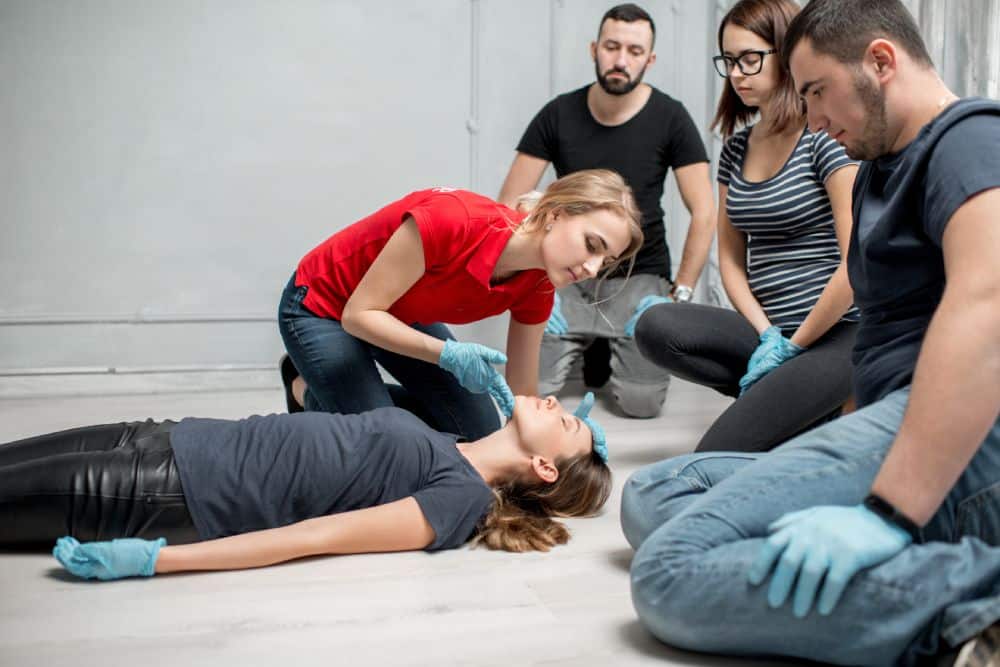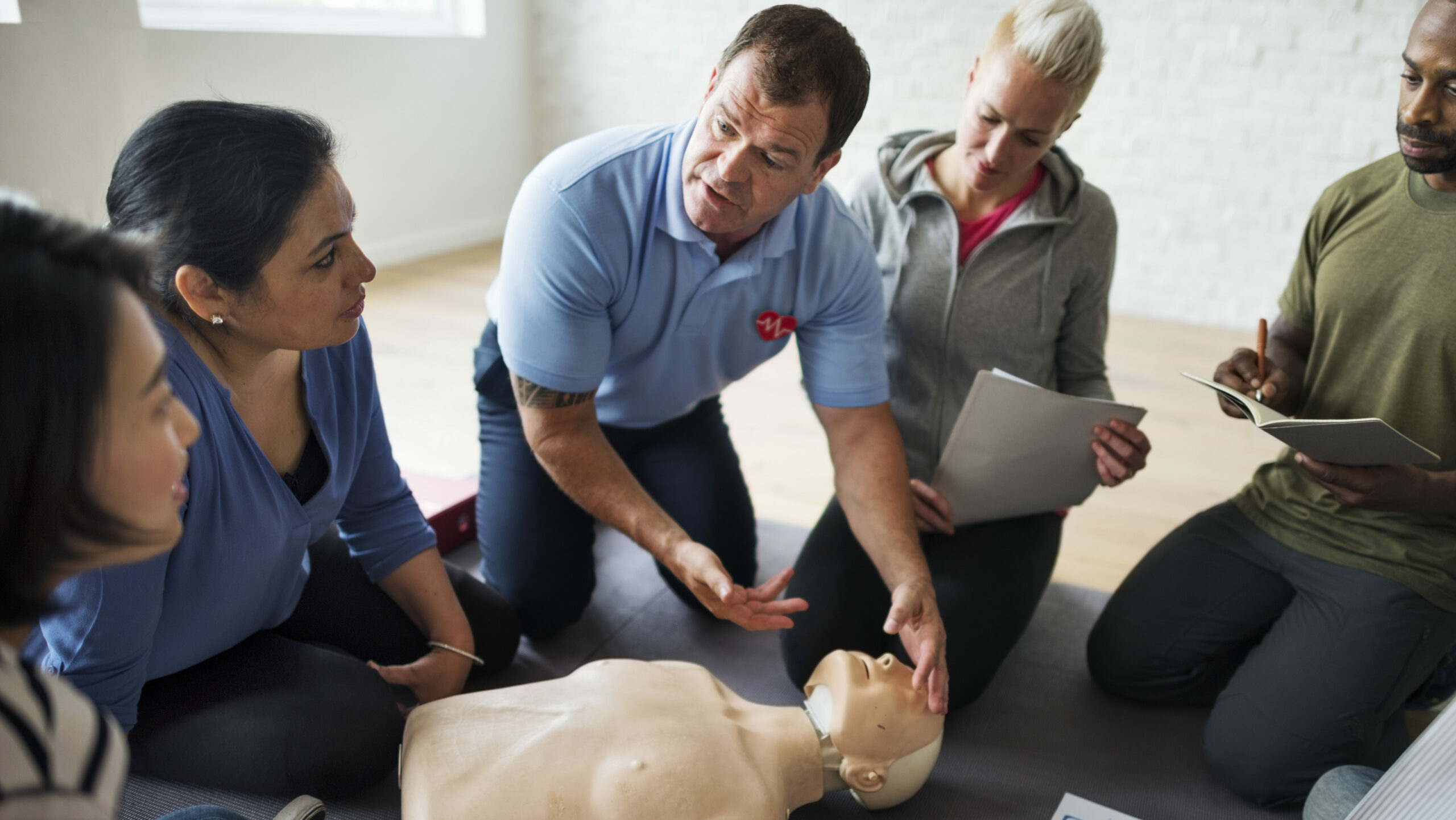Introduction
Cardiopulmonary Resuscitation (MOUTH-TO-MOUTH RESUSCITATION) is more than just a series of breast compressions and breaths; it's a life-saving skill that can be the distinction in between life and fatality in emergency situations. The knowledge obtained from a first help course or CPR course can encourage people to react effectively when faced with a heart attack, choking case, or other vital emergency situations. This post explores the real-life applications of mouth-to-mouth resuscitation, highlighting its importance and the impact of training on conserving lives.
Real-Life Applications of mouth-to-mouth resuscitation: When Training Conserves Lives
Understanding CPR
CPR is an important emergency situation procedure utilized to preserve mind function until further steps are required to restore spontaneous blood circulation and breathing. It includes two components:
Chest Compressions: These resemble the heart's pumping activity to keep blood flow. Rescue Breaths: These provide oxygen to the lungs, important for survival.The effectiveness of CPR substantially boosts when done instantly after heart attack. Studies reveal that prompt mouth-to-mouth resuscitation can increase or triple the chances of survival for victims.
Importance of Emergency treatment Courses
First aid training courses gear up individuals with necessary abilities beyond mouth-to-mouth resuscitation, consisting of injury care, recognizing strokes, and handling cracks. By participating in these training courses, you're not simply learning more about emergency situations; you're preparing yourself to act decisively when it matters most.
Key Elements of First Aid Courses
- Basic Life Assistance (BLS): Covers adult, child, and infant mouth-to-mouth resuscitation techniques. Choking Alleviation Techniques: Includes back blows and abdominal thrusts. Wound Monitoring: How to clean and clothe wounds properly. Recognizing Emergency situations: Recognizing when to call for aid versus taking care of a situation independently.
The Duty of CPR in Cardiac Arrest Situations
Every year, thousands of thousands experience heart attack outside hospitals. Without immediate treatment, the survival price goes down dramatically every minute that passes without CPR.
Statistics on Heart attack Survival Rates
|Time Without mouth-to-mouth resuscitation|Survival Price (%)|| ------------------|-------------------|| 1 Min|90|| 5 Minutes|50|| 10 Minutes|10|
Source: American Heart Association
Being learnt CPR ensures that bystanders can step in with confidence throughout these crucial moments.
Real-Life Case Studies Demonstrating Effective Mouth-to-mouth Resuscitation Application
Case Study 1: The Quick-Thinking Bystander
In a busy coffee shop one bright mid-day, a private fell down because of heart attack. A close-by restaurant that had completed a first help and CPR course jumped into activity. They started administering chest compressions while another customer called 911. Within minutes, paramedics arrived and utilized an Automated External Defibrillator (AED), eventually restoring the patient.
Case Research 2: Office Emergency
During a business training event, a staff member all of a sudden fell unconscious. Thankfully, several associates were certified in both emergency treatment training courses and innovative life support strategies. Their swift action included calling emergency solutions while performing high-grade CPR until assistance arrived.
Why Participate in CPR Courses?
CPR courses offer hands-on training that develops self-confidence in your abilities throughout emergencies. Below are some engaging factors to register:
Life-Saving Abilities: You find out exactly how to conserve lives. Boost Self-confidence: Practical exercises assistance seal your skills. Certification Opportunities: Many training courses supply certificates upon completion. Community Influence: Educated individuals add favorably to culture by being ready for emergencies.What Are the Various Sorts Of CPR Courses Available?
When taking into consideration which training program matches your requirements best, it is very important to recognize the different types of available courses:
Basic Adult/Child/Infant CPR Course
This training course concentrates on age-specific techniques customized for grownups, youngsters, and babies with extensive hands-on method on mannequins.
Advanced Cardiovascular Life Support (ACLS)
Geared toward healthcare professionals, ACLS builds upon fundamental life support abilities with innovative treatments like drug administration and advanced respiratory tract management.
Pediatric Advanced Life Assistance (PALS)
Designed for doctor that take care of seriously ill babies and kids; friends includes situations particular to pediatric emergencies.
Online vs In-Person Training
Many organizations currently provide online modules which can supplement traditional class discovering but do not change hands-on method vital for grasping skills like breast compressions.
Benefits of Having a First Aid Certificate
Obtaining a first aid certificate demonstrates your commitment to security and preparedness in numerous environments-- whether in your home or job-- enhancing both expert integrity and personal guarantee when emergencies arise.


Career Advantages
Having qualification can improve employability in areas such as education and learning, health care markets, fitness training fields where safety and security is paramount.
Common Misunderstandings About CPR
It's vital to eliminate myths surrounding this vital capability:

Myth # 1: "Just Clinical Professionals Should Execute CPR"
Fact: Any person can carry out standard life-saving strategies if educated properly; you don't require clinical expertise!
Myth # 2: "You Can Hurt Somebody by Executing mouth-to-mouth resuscitation"
While it's true there's some risk included-- it's much exceeded by the prospective advantages when performed correctly!
Myth # 3: "mouth-to-mouth resuscitation Is Just Required For Grownups"
Children likewise need prompt interventions; therefore recognizing pediatric methods is similarly vital!
FAQs About Real-Life Applications of CPR
FAQ 1: What must I do if I see someone collapse?
If you witness someone collapse:
- Check responsiveness Call emergency situation services Begin executing mouth-to-mouth resuscitation quickly if they show no signs of breathing
FAQ 2: How frequently must I renew my certification?
Most organizations advise renewing your first aid certification every two years as a result of developing standards and practices.
FAQ 3: Can I find out CPR online?
While online courses offer useful details, hands-on technique is necessary for mastering abilities properly-- look for hybrid alternatives if possible!
FAQ 4: What are some tips for carrying out effective breast compressions?
Aim for:
- A depth of at least two inches A rate around 100-120 compressions per minute Allow full recoil between compressions without lifting hands off the upper body
FAQ 5: Do I need unique devices for carrying out rescue breaths?
No unique devices is called for! Nonetheless making use of obstacle devices like face shields can boost safety while giving rescue breaths if available.
FAQ 6: What function does AED play along with CPR?
Automated Exterior Defibrillators assess heart rhythm & & advise whether shocks are needed which significantly enhances opportunities of survival when used together with top notch upper body compressions!
Conclusion
The real-life applications of CPR are undeniable; they expand much past theoretical understanding right into actual scenarios where lives are conserved via definitive activities Hobart First Aid Course Near Me taken by skilled individuals. Enrolling in an extensive first help course or attending specialized CPR courses outfits you with vital abilities that can make all the difference during an emergency situation scenario-- not simply profiting others but encouraging yourself too! The time invested today prepares you for whatever tomorrow may bring-- and isn't that something worth considering?